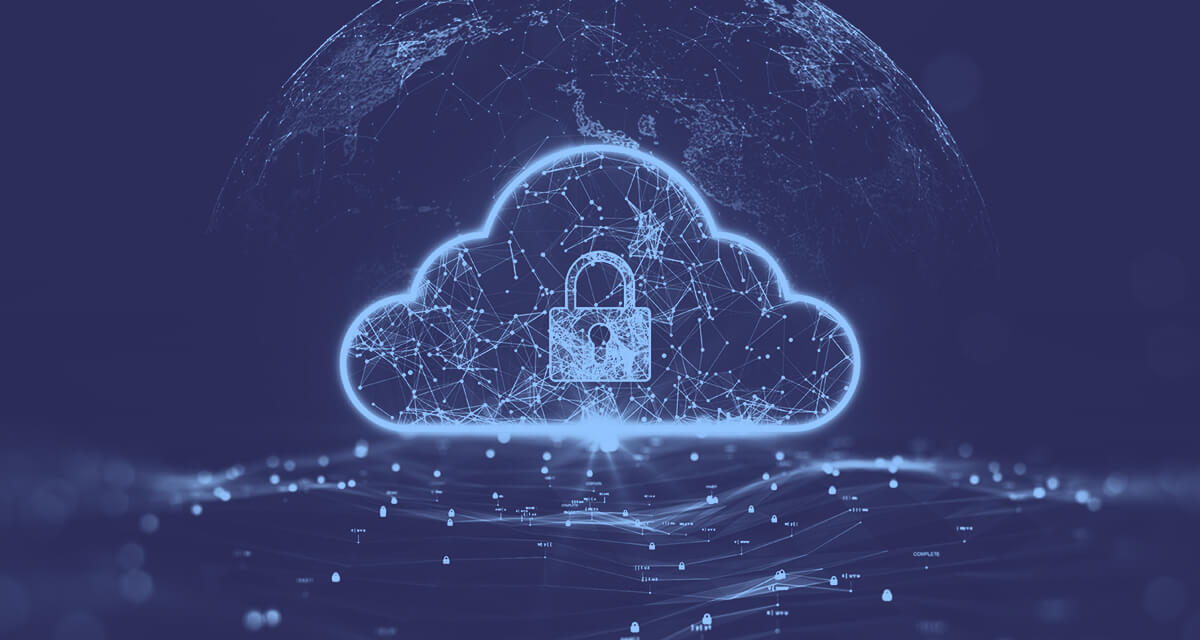

A data center is a physical facility responsible for providing computing power to support business applications. It exhibits storage capabilities that help process and store data for administrative use while also handling networking equipment to connect the employees of an organization. Data centers are integral to every organization that provides technical assistance in running routine operations smoothly.
With the advent of modern technology, physical data center facilities are actively replaced by cloud-based alternatives. Today, data centers house advanced and virtualized mechanisms to streamline corporate workstations, data storage, network infrastructure, and IT framework. Consequently, it helps organizations save physical space while effectively managing organizational workloads.
Data center facilities have a key role in the success of an organization. Their primary objective is handling organizational data required to manage corporate affairs flawlessly. Generally, data centers have vast storage spaces that can systematically accommodate loads of corporate data. Whenever required, these data centers can fetch the required information from their database, making it easily accessible and computable.
In addition, data centers can also help businesses to back up and recover important information that might get lost due to technical glitches or data breaches. They are also responsible for running multiple productivity applications such as email to catalyze business processes. Some organizations utilize their data centers to perform e-commerce transactions, while others focus on developing machine learning initiatives and deploying Artificial Intelligence frameworks.
Data centers have a fundamental role to play in today’s world. The advent of the Internet has revolutionized storing, accessing, and computing data. Rather than maintaining physical records of information, individuals and corporations seek to store data online. But why? It is because digital data is relatively convenient, reliable, and less time-consuming to access and secure.
Every piece of information that we surf on the Internet is stored in a data center. The cloud software, website, or application we normally use, stores information in data centers. Without the help of data centers, we cannot benefit from these online sources that house useful data.
Corporations must process tons of data every day to ensure their business operations run smoothly. In the past, maintaining physical records was very time-consuming and ineffective, but it was the only way. With the world moving towards the web, everything is changing. Physical files and folders are replaced by cloud computing solutions that effectively store, access, and compute digital data stored in data centers.
Today, almost every corporation handles digital data stored in data centers, regardless of their size. Cloud computing solutions provide them the opportunity to timely and securely share this data with their stakeholders. At the same time, they can also protect digital data from potential threats cost-effectively.
With the increasing technological advancements, data centers are evolving rapidly. Modern data centers integrate sophisticated equipment and technology to power their operations. Unlike on-premises servers, modern data centers are super-efficient and require minimal physical space. They are well-optimized, and their operations are relatively less time-consuming than their physical counterparts.
Because modern data centers utilize modern technology, they are far better than their predecessors. They have improved data processing power, increased storage space, and reliable security systems to protect organizational data. Above all, they handle organizational workloads via virtual networks, thus making them easily accessible and manageable.
Depending on the organizational functions, the data center infrastructure can vary significantly. For instance, the data center designed to facilitate the business operations of a cloud service provider would differ significantly from an organization dealing with classified information. Although the core components of these data centers might remain the same, their functionality would be quite different.
Here are some common elements of a modern data center.
Every data center requires physical space to house its IT equipment. Although the need for physical space to run data centers has decreased gradually due to cloud computing solutions, it is still a requirement.
A data center requires dedicated software and equipment to run business applications, manage data storage, and handle IT operations. Data center components typically include storage devices, networking equipment, routers, and security components.
Any organization with an active data center requires support infrastructure to ensure maximum availability. The Uptime Institute has demarcated four data center tiers that determine the availability of an operational data center. Organizations install power subsystems, uninterruptible power supplies, and backup generators to stay within these prescribed tiers.
Likewise, they also deploy numerous cooling systems, air conditioning, and exhaust systems to optimize the performance of these data centers. Not to mention security elements such as biometrics and video surveillance to minimize security risks.
Data centers require consistent monitoring to ensure they work flawlessly. Therefore, organizations must hire qualified staff to supervise operations while maintaining the physical infrastructure.
Not all data centers are created equal. Depending on the business requirements, organizations must decide which type of data center would best fit their organizational needs. Here are some common types of data centers that organizations deploy:
Enterprise data centers are designed to facilitate organizations’ data storage systems and computing needs. It accommodates a series of physical processing units such as servers, networking devices, and storage components paired with supporting infrastructure. The purpose of an enterprise data center is to facilitate the employees of the organization by handling IT operations and business applications. Besides, they can be located both on-premises and off-premises.
A managed services data center is a facility that is arranged, handled, and supervised by a third-party data center service provider. It offers similar functionality to a standard data center; however, the data center services are not owned by the organization.
A cloud data center is an off-site facility deployed and maintained by a cloud services provider. Rather than deploying their own data centers, organizations lease infrastructure equipment from cloud providers such as Google Cloud. As a result, customers gain remote access to a virtual data center in just a few minutes. Keep in mind that the public cloud provider manages all the public cloud infrastructure, including security systems, power, and cooling.
Colocation data centers are lease properties located in colocation facilities owned by a third party. The leasing organizations must provide the hardware while the third-party vendor handles data center equipment such as storage infrastructure, computing services, and security systems. A colocation data center is desirable to corporations who wish to minimize their business expenditures linked with developing and maintaining their own data center.
Edge data centers are facilities that accommodate data center infrastructure, which must be located closer to the end user. These facilities are relatively smaller than colocation buildings and only deal with latency problems that might arise due to geographical distances. Typically, they house cached storage and backup systems that hold latency-sensitive data required to maintain desired performance standards.
A micro data center is a modular data center architecture tailor-made to handle corporate computer workloads. Unlike large enterprise data centers, they are much smaller and can process a limited amount of data, thus being suitable only for small businesses. However, micro data centers promise low latency, faster deployment, and reduced costs.
The Telecommunications Industry Association (TIA) highlights the standards for data center design. This regulatory body sets the criteria for data center infrastructures. The most common telecommunications infrastructure standard adopted worldwide is the ANSI/TIA-942. Data centers are categorized into four unique tiers based on this standard.
A tier 1 data center design comprises single-capacity equipment that delivers limited protection against cyberattacks. They have an expected downtime of 28.8 hours per year.
Tier 2 data centers are better equipped against physical events and consist of several redundant systems. Their annual downtime is expected to be around 22 hours.
With several self-regulating distribution pathways, a tier 3 data center is equipped to protect against every physical event. With annual downtimes as low as 1.6 hours, their components can be supplanted without disturbing services.
With multiple distribution pathways and maximum fault tolerance, a tier 4 data center has a minimal downtime of only 26.3 minutes annually.
Data center security encompasses physical and digital measures that corporations can adapt to ensure data protection. Because data centers promise shared access to critical applications and data, ensuring data security is important.
Here are some measures that corporations can implement to maximize data center security.
Physical measures to ensure data center security inculcate practices like choosing the right location, securing access controls, and installing surveillance systems. Data centers must be located such that they are protected from natural disasters. Physical access control, such as biometrics, must be established for identity verification. Likewise, organizations must ensure video surveillance to secure all access points to restrict unauthorized entry.
Apart from physical security, a data center also requires digital security to minimize the risk of cyber threats and data breaches. For this purpose, organizations must ensure that the servers are secure by installing the latest security patches, adhering to secure protocols, and using strong encryptions. Companies should also focus on using firewalls and anti-malware software to maximize cybersecurity.
Artificial intelligence is the talk of the century. With acknowledging the importance of cloud computing solutions, manufacturers are keen to merge them with the AI framework. The AI is capable of using deep learning models to create algorithms that can significantly enhance the performance of any data center. Upon implementation, it can handle multiple processes that require human resources.
For instance, AI-developed algorithms would allow corporations to manage energy distribution, maintain cooling efficiency, optimize server workloads, and eliminate cyber threats in real-time. It can also help exploit underutilized resources and detect hardware failure without human intervention.
Cloud computing is a revolutionary innovation in the data world. Having the ability to store, access, or process digital information securely in data centers is a giant leap toward a digital future. Due to cloud-based solutions, corporations and individuals are now able to manage digital information effectively. Although it has given rise to potential threats, cloud computing is far from obsolete.
